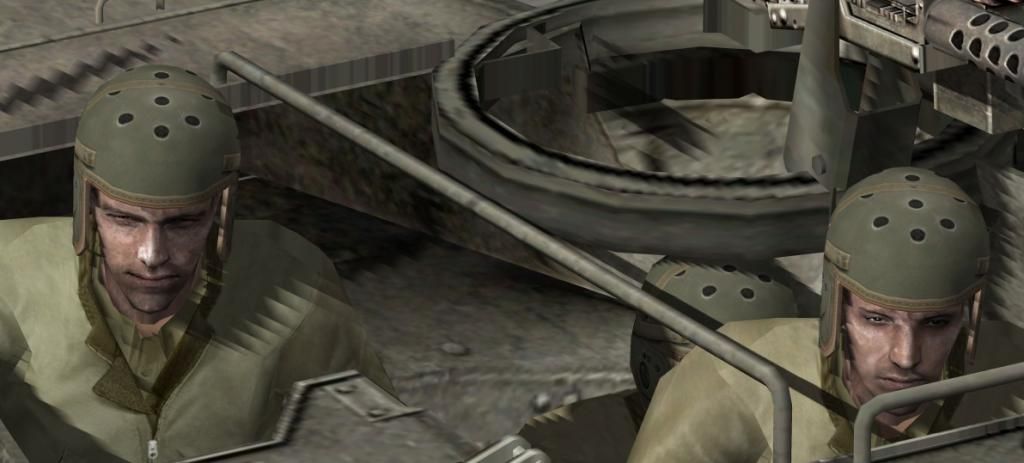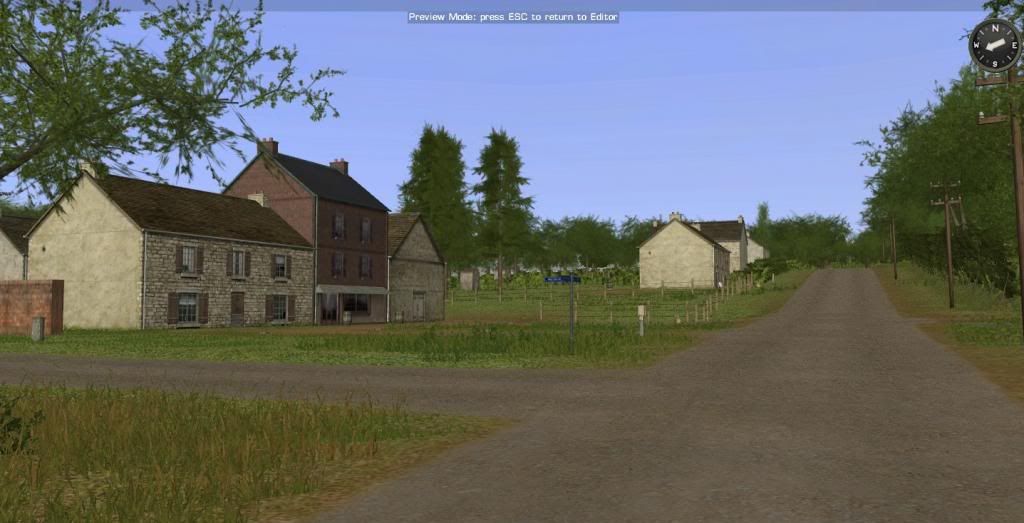-
Posts
2,704 -
Joined
-
Last visited
-
Days Won
2
Posts posted by JohnO
-
-
Thanks, Pete. What if you can't find a map and have to rely on GE? Right now GE doesn't show elevations as it use to. I watch Chris video on making overlay and he used GE but I got lost when he did the elevation.
Here is the link:
http://www.twitch.tv/chrisnd/c/5628262
and if you could watch it and help explain how to do it the way he explain it.
Thanks.
-
RW ATK = Rotor Wing Attack (AH-1 Attack Helicopter)
-
Interestingly, we almost had a diplomatic crisis on our hands toward the end and it significantly impacted our operations. Essentially the Canadian casualty rate was so high their government was threatening to end their involvement in the coalition. Since they were our only armored force (outside of the host nation) their new restrictions inhibited our ability to transition to the offense and push to the Arianan border.
Another interesting point was the enemy's ability to keep our aviation assets (particularly our AH-64s) limited to operating in our rear areas (which still had significant insurgent activity) due to their air defense umbrella. We (the USAF mainly) reduced their big radar systems but it was the smaller MANPADS systems that took our biggest tank killer off the table. We could gain superiority and reduce the threat for specific operations but it required a lot of staff work.
Just looked at the Road To War for the next exercise and it is still the same for each exercise, the 82AB will still take the Embassy and other key objectives in the major city and the Canadian armor is replace by the US armor.
-
JohnO-
I doubt we ran into each other in the halls but its possible. I am the day battle captain for the 82nds Div tactical CP (DTAC). As a 57 I was pretty involved in the planning of the WFX but when the rubber hit the road I had to move over to the mission command side of my job.
A great exercise from where I was sitting, we learned alot, though someone has to tell your leadership to drop the iranian horde scenario when you are dealing with light infantry divisions. We tried to make the point a year ago when planning started but that enemy tank corps kept working its way back into the scenario. Without the Canadian armored battle group to take it on the chin for us, it would have been Market Garden all over again.
That was the plan, although I was with the CAB, FiB, and ENGs. I wasn't with the maneuver elements. I did watch and listen in on the DIV CUB. I was with OPSGRP F.
-
I am a Simulation Operations Officer with the US Army. (Yes, there is actually such a career path in the US mil now.) I just recently made this transition and am getting my feet wet, having spent 15 years in the Infantry prior to volunteering for a change. A few points based on my knowledge and experience so far...
I went to a SimOps course with Dr. James Sterrett mentioned in the PC Gamer article, as well as a few other online articles he has been interviewed for. A very knowledgeable scholar who was always eager to share his thoughts and experiences. If you could make direct contact with him (most likely through CGSC at Ft. Leavenworth) he is probably one of the most knowledgeable about the use of gaming in the classroom, particularly to train field grade and senior leaders.
From a big Army perspective, off the shelf gaming products rarely meet the needs for training, for a number of reasons. Probably the biggest is the ability to tie into our digital systems. The Army has spent the last 10+ years developing a wargame (called WARSIM) that is fully integrated into our battle command systems, sustainment systems, and fires system. This means we can set up a brigade or division command post and all of our digital systems that we use to track and fight a battle can be stimulated by the sim, so that the maneuver guys, the fires guys, and the sustainment guys can all look at the same "picture" and see the same things in the actual real digital systems they use every day. Not something you can do with a software based game that 99% of the time is developed as a single player wargame.
Another drawback to off the shelf games is that they often are severely limited in simulating the "full spectrum" of conflict. Take CM for example. No engineering capability is adequately modeled. A commander cant move onto a piece of ground and select his defensive positions and then dig them in, place obstacles etc and then suffer the consequences (or success) of his decisions. From an offensive standpoint there is no ability to use most of the minefield breaching and bridging assets available to the armies of WW2 or today.
Fire support is adequate but still suffers severe drawbacks because the playing field is not linked to a map, a very important aspect for training soldiers to plan fires, targets and conduct calls for fire. The aspects of Close Air Support(CAS) and MEDEVAC are severely restricted or not modeled at all for similar reasons.
Of note the Army poured a lot of money into VBS (Bohemias ARMA 2/3) in an attempt to address a lot of the issues raised above in a simulation and for the most part accomplished what they wanted. Unfortunately, the game requires individuals playing individual characters and does very poorly when trying to aggregate squads, platoons, etc.
I was involved in an experiment to use VBS in the Maneuver Captains Career Course, giving each member of a small group control of a maneuver platoon. As a sim for vehicle platoons it worked fine (M1, Stryker, Bradley) because the game AI was very adept at operating those systems with little input from the player. But once you tried to get a squad to conduct a breach or move to a specific spot in a building for example, it experienced some serious and frustrating issues.
This brings up another snag. Program contracting. Military contracts are often made for extended periods of time (years). And so this forces the Army to try to make the best of whats available. And the contracting process takes so long that by the time the program equipment (or software) actually reaches the user, its often outdated or inadequate to meet changing requirements. Hence the failed (in my view) attempt at turning VBS2 into a company level sim. Most sim center in the Army now have VBS2 suites that will sit up to a hundered players so you can train most of a company at a time. But it still isn't very efficient since you are basically conducting leader training and the individual soldiers aren't actually training with their systems (it would be more productive to send them to the range while the leaders of the organization trained in the sim.)
Bottom line- the US Army continues to meet the training requirements through the use of sims and will for the foreseeable future. BUt there is a gap that currently exists for battalion and company level simulation.
I've worked with Dr Sterrett when I was working at CGSC, still in touch with him, also helped with the FA57 course. Now I'm working at MCTP and just got back from Ft Bragg doing a War Fighter Exercise with the 82AB now getting ready for another one next month. We use WARSIM and have experience with VBS3 and ARMA3. Glad to see your post here. Shoot me an email if you want to talk about VBS3 and ARMA3.
-
Any chance of some "Sergeant Rock-like" contemptuous snarls?
We need one with an eye patch

-
All 14 US faces modded with added weathering, now I will create a second set with wounds stitches, scars, headbands, (I will use the same textures that worked so well for the germans,...).

Is that sun block on that one dudes nose

-
I don't see the screenshots either.
-
Just download your map, it is nice. Thinking on making a scenario, soon using this map.
-
-
-
I see some people mention about using VASSAL, would Generic Campaign Control System (GECCOS) work as well? It was used during CMMC4 a long time ago.
-
-
Are you going to upload it at the Repository as well as CMMODS?
-
Wow, nice job, can't wait ti play it.
-
I have just experance this issue as well playing a PBEM and just reported it with a ema file and this isn't with a QB map but one of Georges scenario.
-
Has it been uploaded to CMMOD?
-
Bah Humbug!!!!!! Just joking, everybody have a Happy Holiday.
-
Looks great, now where is it

-
Hamertime, my favorite. The problem I'm seeing in some of the maps is very large ares that when the maps were made, it was large areas of sand or hard ground, not many trees or vegetation. The maps will have to be modified to add trees and vegetation.
Except Hamertime my favorite.
-
Excellent! Maybe we will get Market Garden by, or shortly after, Christmas after all.
I don't think so

-
THAT'S why the Germans used feldgrau. The grey allowed them to blend in with things like gravelly roads and stone walls. Those Brits probably finished the war and never knew he had been there...
So they were the first one to go in stealth mode

-

I want to know what happen to that German kneeling next to the jeep while the Brits are shooting at something else

-
Do you recall which map it was, so that it can be looked at?




Map Resource
in CM Black Sea Maps and Mods
Posted
Thanks Pete. Now I can start to work on my map